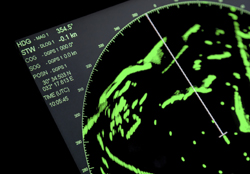New tool validated for better sonar seabed mapping
All aquatic plants large enough to see with the naked eye, like seaweed, algae and kelp, are called macrophytes. They stabilise surrounding habitats, maintain biodiversity and are used in chemical, pharmaceutical and food industries. However, macrophytes are highly sensitive to environmental changes. In the Arctic, where climate change is the most readily visible, macrophytes are important indicators of habitat health and glacier melting. Scientists use sonars to map macrophyte populations. The EU-funded 'Acoustic imaging of macrophytes and habitat investigation' (AIM-HI) project set out to investigate the performance of an emerging technology: multi-beam echo-sounders (MBES). The tool analyses acoustic echoes from the seabed and any overlying vegetation, looking at wide ranges away from the survey vessel. The advantage of MBES over older single-beam echo-sounders (SBES) is that larger portions of seabed can be surveyed at faster speeds. This is important in ecologically sensitive areas, and in remote and physically challenging regions. Researchers wanted to determine the best way to process large MBES datasets, assess accuracy of results and the variations in different types of MBES tools. They used datasets from Arctic macrophytes in Kongsfjord (Svalbard) and temperate macrophytes from British Columbia and European shores along with still images and biological samples to answer their questions. AIM-HI found that depending on the sonar used, up to 30 % of MBES measurements in the centre beams can be lost or affected by noise. However, this can easily be corrected by averaging several measurements, taking advantage of the higher imaging rate of MBESs. Also, MBES can provide 'snippets' of the acoustic returns along the full water column, thereby enabling better characterisation of macrophyte cover and seabed substrates. In terms of reliability, MBES can image further away than SBESs. There is however a 'dark zone' over an intermediate range of angles at which acoustic returns from macrophytes disappears. This research identified a common processing methodology applicable to all depths or environments and adaptable to different sonar types. The results have already been shared with major sonar manufacturers. MBES technology should also prove useful to national marine institutes, environmental organisations and the macrophyte industry in general.







